Environment
The Refuge of Nature
Finding solace in the natural and sensory worlds during a pandemic.
Posted March 30, 2020 Reviewed by Devon Frye
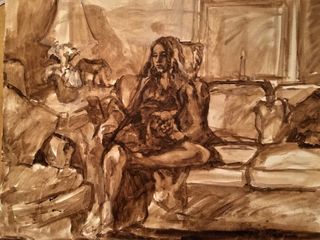
Synesthete artist Carrie Barcomb has always been a naturalist. The Brandywine Valley, PA resident is taking solace during the coronavirus pandemic by spending even sweeter, sensory moments out of doors. Her reflections on the Earth in this historic time struck me as something which might inspire others finding themselves in the netherworld depicted in her underpainting, "Shelter," to take a walk (while safely social distancing), and perhaps see, hear, taste, smell and feel things as never before.
How has nature has come to mean even more to you lately?
CB: As a child, I always relished time spent outdoors, where I wandered wild forests and fields for hours. There was always something new to discover—a bird or plant to observe. I enjoyed every tree and plant, the changing seasons, and feeling the excitement after a storm to see where the stream may have rerouted due to debris or an overturned tree.
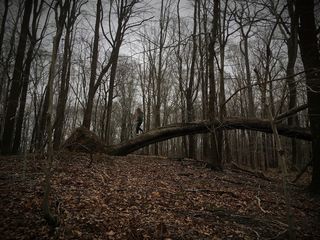
As an adult, leading a routine hectic life, my time in nature was spent on scheduled trips to explore this country and others, to places of gorgeous and exotic landscapes. This global pandemic has halted everything. Everyone has come to a grinding halt. Amidst this devastating crisis, we are challenged to cope with and reassess our lives.
My isolation has forced me outdoors, yes, but also back into the woods. My son now has time to explore the woods freely without external pressures, even declaring that here in the forest, "the trees are boss." My teenage daughter is also finding joy from simply walking across giant felled trees.
It has made me mindful of my ancestors who farmed up until the 20th century. I appreciate stories where my grandmother used folk wisdom to predict the weather. Although she worked in a city, she would travel to her family farm in the summertime to plant enough crops to feed her family for the rest of the year. It’s made me rethink food supply and materialism, how instead of simply recycling a plastic bottle, I’ll reuse it for frozen orange juice.
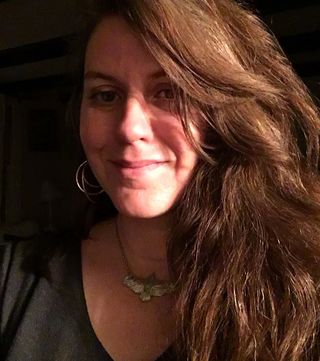
Like many of my friends, I’ve also started looking into planning a garden. I bought seeds from a local Amish woman, including a rare heat-tolerant “deer tongue lettuce,” circa 1840. My neighbor and I are even considering raising chickens together. This crisis has led me to appreciate nature as vital and important, as life-sustaining and for mental well-being. Nature is more beautiful and essential to me today than ever before.
Can you tell me about your sensory impressions of nature?
CB: With each passing mild winter, I feel the pulse and vibration of the grand old trees around me grow weaker. Sometimes I wonder if my own senses are weakening from age, or if the energies in this world are fading. Maybe both.
On a visceral level, I take in a variety of cross-sensory experiences. I enjoy observing the slow steady rhythm of the earth. There is a deep, low hum, that resonates across the land, ringing up around us, and up into the sky. The sky above is a giant dome of brilliant sparkles, like the sun's hot surface but in cool, silvery blues—something known as the Blue Field Entopic Phenomenon. In recent years, I've noticed our skies have become dulled, saturated with an acidic umber haze from pollution that settles across the horizon.
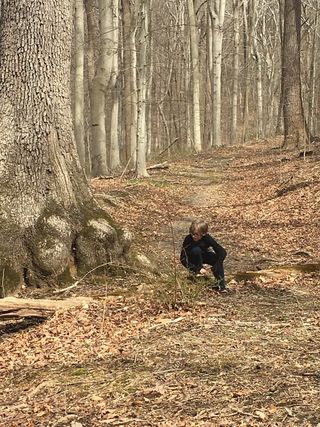
You have keen personal observations about Earth due to your virtuoso senses. Can you share?
CB: Despite the miraculous wonders of our world, I see troubling signs, from both a naturalist and a synesthetic perspective. The difficult aspect of nature, which holds the greatest concern to me is the changes to our air quality. Scientists collect data showing we are living in a hotter climate, where our air has become besieged with tons of particulate matter, mixed in a toxic stew of microplastics and other debris from unprecedented wildfires in the Arctic, Amazon, and Australia. Polluted ash has been released across the globe, leaving our air smelling foul, and even acidic-tasting. My area is especially wrought with harsh synthetic smells from decades of industrialism, where smells of diesel and gas are widely reported across large geographical areas, which has happened so frequently our local government now works to record these mysterious odors.
The day after a refinery explosion in the summer of 2019, I awoke to air charged with a harsh electrical and caustic odor for days. I've now found there is a constant acidic odor ever-present outdoors. The air sometimes tastes and even feels gritty and abrasive. It’s sometimes difficult for me to remind myself to overcome and adapt to this invasive intruder, and sometimes I find it difficult to stay outdoors, and wonder how nature, as we know it, can survive.
As a naturalist, it is difficult observing changes. In my area, the number of days of hot, dry air have increased, along with increased rainfall and with it, flash flooding. This flooding scours entire communities of microorganisms from stream banks. Delicate species are washed away, unable to rebuild. This strain reduces the resiliency and biodiversity of our environment.
Synesthetically, there are days I have now observed my area covered in a haze of dry brown dust. I have seen times where our wild, wicked storms can also include days of extreme dead silence. In the forest, everything is absolutely still, devoid of light and color forms. The trees are exhausted, their bark is brittle and cracked. This arid air is disrupting the beautiful patterns I once regularly observed.
In April 2019, I observed a dreadful fungal attack on insects which were being eaten alive from the inside out turning them to crisp ashen corpses. The fungus felt as if it was part of this greater energetic brown fog. In October 2019, we had a cool morning which gave way to an intense 90-degree afternoon heat. I came across a group of salamanders which were perfectly preserved, air-dried. As if they were caught in the sudden heat, their poses frozen in time, like they were trying to move.
On March 21, my daughter and I were walking through the forest and she discovered a snake emerging from its hole. As is typical after hibernation, it moved sluggishly—undulating back and forth in a wave-like motion. However, it didn’t look healthy. Its head jerked suddenly and it forcefully hit its head on the ground, like it had a stroke. Half its body was dried and withered. It was sad witnessing a young snake emerging into spring to die. Although nature is cruel, seeing animals struggle this way, out of sync with established cycles, are for me also devastating signs of demise.
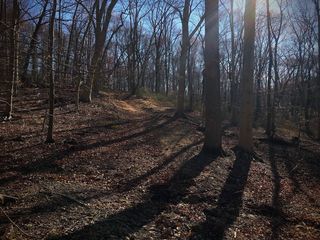
Is there a way forward?
CB: With this virus, humans are now forced to pause for our own survival. Rachel Carson had said, “One way to open your eyes is to ask yourself, "What if I had never seen this before? What if I knew I would never see it again?” We must remember that nature is essential to our living. For me, the air we breathe appears not flowing and harmonious but like a chaotic disruptive dusty heat mirage. With this subtle decay and shift of established energy patterns along with a recent deadly flu season and the current aggressive virus, I am not surprised to hear that coronavirus patients reporting having reduced or completely lost their basic sense of taste and smell. We must learn to clear this "fog" and reconnect patterns. It will take coordination and strength to adapt to and endure these global changes.




